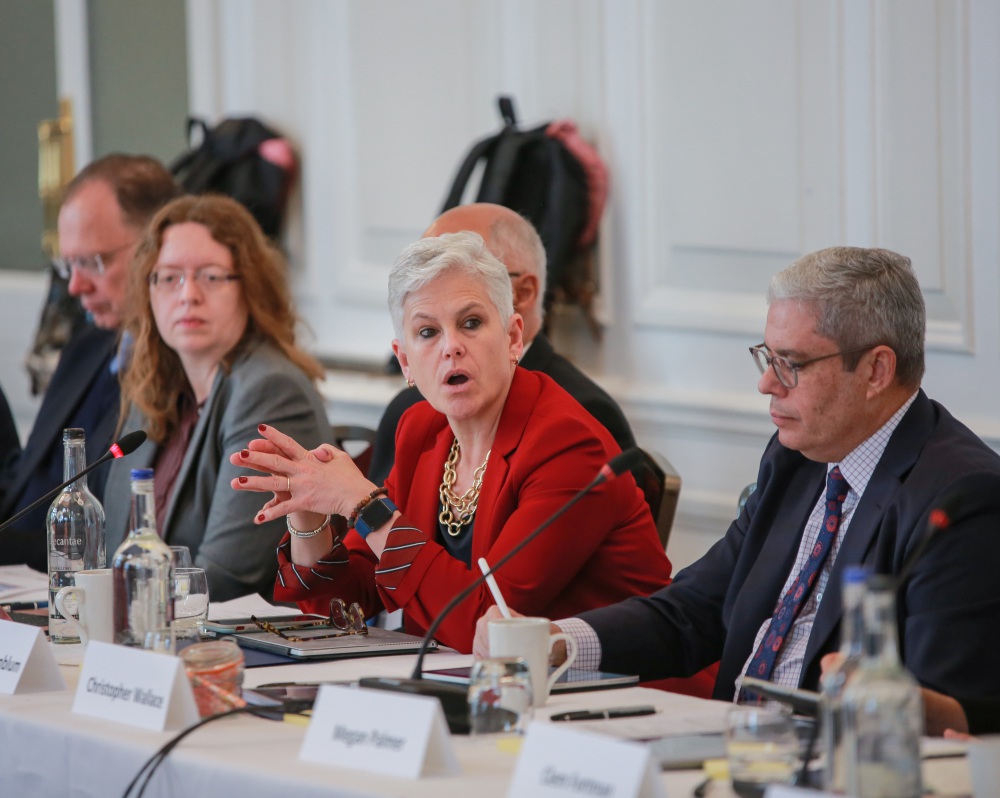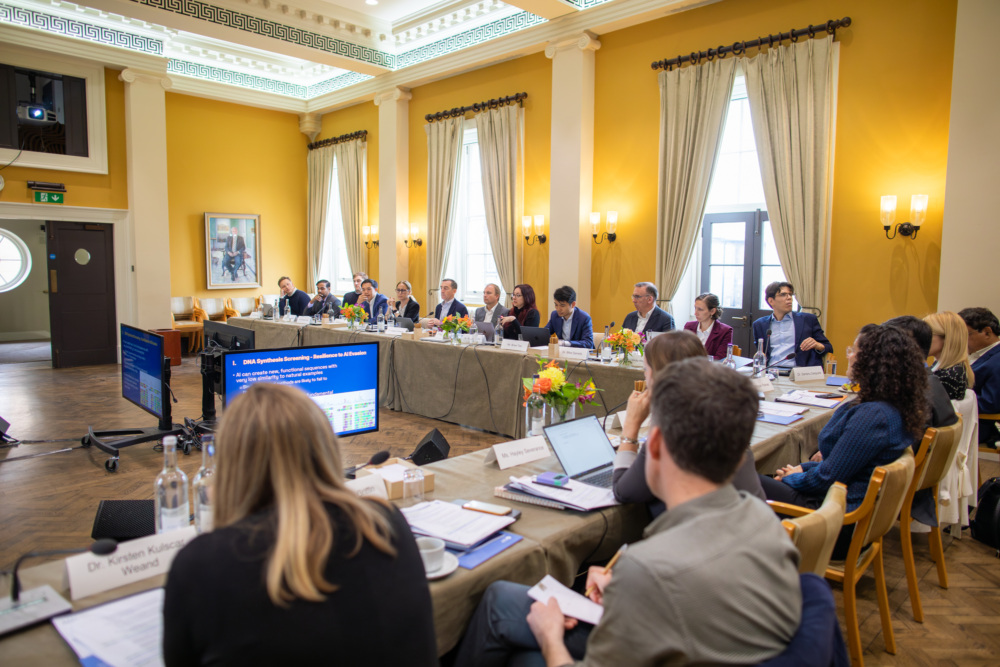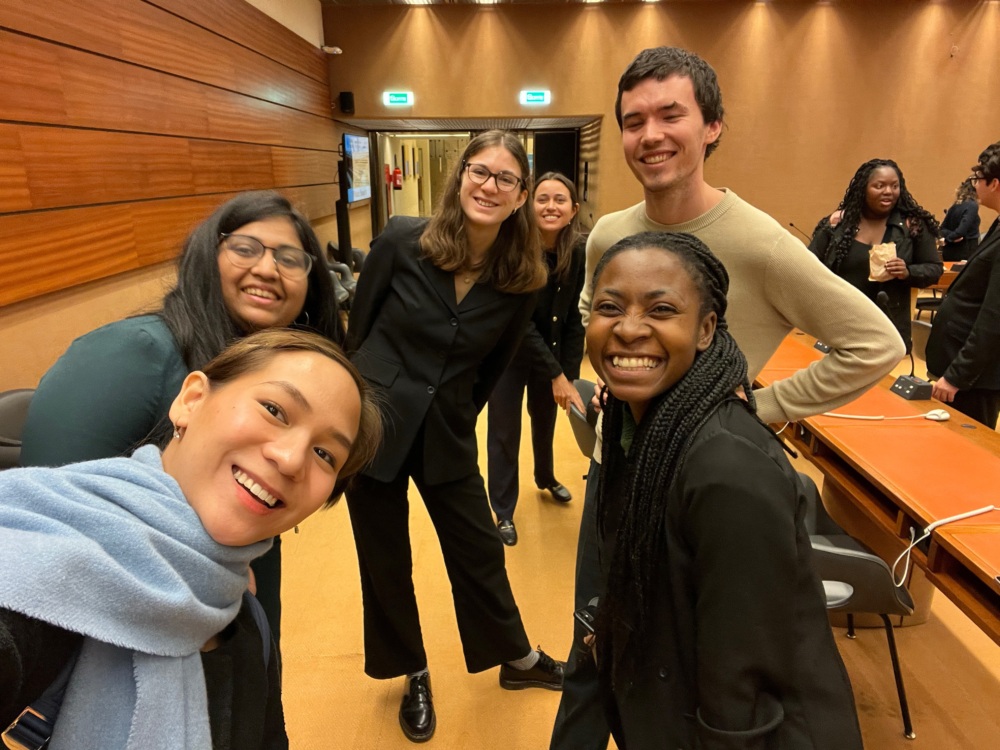NTI | bio convened international
scientific leaders in London from April 3-5, 2019 to develop concrete, catalytic
projects to reduce biological risks associated with advances in technology. The
workshop was held to inform and provide recommendations to two working groups
within the NTI Biosecurity
Innovation and Risk Reduction Initiative that seek to develop an
award or seal of approval to incentivize adoption of biosecurity norms
and standards
for funders, grantees, investors, and publishers to identify and reduce biological
risks. Discussions at the meeting also will inform additional NTI-led
work to explore insurance
incentives for reducing biological risks and financial
incentives for biotechnology investors to improve biosecurity.
The gathered leaders included technical
experts, as well as publishers, funders, and insurers with expertise spanning
the disciplines of microbiology, synthetic biology, biotechnology, and public
health. “It’s unique to have this constellation of experts in one room to
discuss since they play a critical role in this ecosystem,” said Margaret
A. Hamburg, NTI Board member and Foreign Secretary of the U.S.
National Academy of Medicine. “Biosecurity innovation and risk reduction is
part of responsible stewardship; it is something for which the entire life
science research enterprise is responsible.”
Ahead of the meeting, NTI | bio
circulated a commissioned framing paper proposing global norms for microbiology, synthetic
biology, and emerging biotechnologies, as well as a summary chart of potential biosecurity requirements for a seal of approval. “The globally accepted norms for identifying risk and
reducing potentially catastrophic outcomes in life science research –
especially when that research involves emerging biotechnologies – is very poorly
defined,” said NTI | bio Vice President Beth
Cameron. “Scientific advances have outpaced governmental oversight,
and national policies can’t keep up. The time really is now for the leaders
developing, funding, and investing in biotechnology to step up and catalyze
innovation in biosecurity.”
Over the course of the meeting
participants were asked to identify conditions for a new action, award, or seal
of approval that could be pilot tested among institutions and across continents
to incentivize adherence to specific biosecurity standards for those using,
funding, or investing in biotechnology research and development. The meeting
culminated in a series of pitch presentations by participant groups linking
together actions from funders, researchers, institutions, publishers, and
insurers to reduce biological risks associated with advances in technology. Participants
proposed the following action-oriented ideas:
- Incentivizing biosecurity by design: Today, there are limited incentives for researchers
to identify and mitigate or eliminate biosecurity risks associated with
emerging technologies. Participants proposed to create opportunities to explore
technical solutions to develop safer and more secure biotechnologies. This idea
accelerates the realization of promising biotechnologies through complementary
research to build in biosecurity and expedite widespread use.
- Creating a new mechanism to show funders and publishers
how researchers are identifying, managing, and eliminating biological
research-related risks: There is a
lack of transparency about the presence and process of risk-benefit
assessments throughout the research lifecycle. This idea promotes an early and
transparent assessment to inform future parts of the research and development lifecycle,
including publication.
- Seal of approval for facilities with excellence
in biological risk reduction: Currently, there
are no international peer-based standards and incentives for researchers,
funders, publishers, and investors to determine which facilities have safe and
secure practices in place for reducing biological risks associated with dual-use
research. Participants proposed the creation of a seal of approval for
institutions with exemplary biosecurity risk reduction structures to
incentivize researchers, funders, publishers, and other stakeholders to
collaborate with and invest in those institutions with best practices in place.
As a first step, the group proposed working with organizations in high-, middle-,
and low-income countries, as well as public health and synthetic
biology-focused organizations, to launch at least two pilot projects to develop
the structure for the seal of approval.
- Launching a global hub for dual-use life science education
and training: The rapid pace of
technological innovation and spread around the globe leaves many researchers
unfamiliar with the latest recommendations regarding dual-use life science
research and biosecurity. Participants proposed the creation of a new online,
open access repository of training and reference material related to dual-use
life science.
As a next step, NTI will work with
workshop group leaders and participants to further explore these ideas and
identify concrete actions to take them forward.
This NTI effort is made possible through
generous support from the Open Philanthropy Project.





